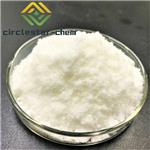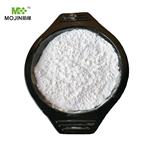Description
4-Hydroxyphenylacetic acid is an acetate derivative used in the acylation of phenols and amines1. It is an active component of Chinese herb Aster tataricus which had been widely used in China for the treatment of pulmonary diseases, HBV, and carcinoma. It is an active metabolite of amino acid metabolism. Study has also shown that it can attenuate inflammation and edema through suppressing hypertonic and hypoxic induction of HIF-1α in seawater aspiration-induced lung injury in rats. In chemical industry, it is an intermediate used to synthesize atenolol and 3, 4-dihydroxyphenylacetic acid.
Referrence
- Liu, Zhongyang, et al. "4-Hydroxyphenylacetic Acid Attenuated Inflammation and Edema via Suppressing HIF-1α in Seawater Aspiration-Induced Lung Injury in Rats." International Journal of Molecular Sciences 15.7(2014):12861-84.
- Ng, T.B.; Liu, F.; Lu, Y.; Cheng, C.H.; Wang, Z. Antioxidant activity of compounds from the medicinal herb Aster tataricus. Comp. Biochem. Physiol. 2003, 136, 109–115.
- Du, L.; Mei, H.F.; Yin, X.; Xing, Y.Q. Delayed growth of glioma by a polysaccharide from Aster tataricus involve upregulation of Bax/Bcl-2 ratio, activation of caspase-3/8/9, and downregulation of the Akt. Tumour Biol. 2014, 35, 1819–1825.
Chemical Properties
4-Hydroxyphenylacetic acid is a white to cream or light tan crystalline powder. sublimation. Insoluble in cold water, soluble in hot water, ether, ethanol, ethyl acetate. In the case of ferric chloride, it is a purple-green precipitate. It is used as a pharmaceutical raw material for the synthesis of cephalosporin antibiotics, antipyretic analgesics.
Uses
It is used as a reagent in the acylation of phenols and amines. It is also used for fluorometric determination of oxidative enzymes.
Uses
A compound present in olive oil. An important fine chemical intermediate with broad prospects for application development.
Definition
ChEBI: 4-hydroxyphenylacetic acid is a monocarboxylic acid that is acetic acid in which one of the methyl hydrogens is substituted by a 4-hydroxyphenyl group. It has a role as a plant metabolite, a fungal metabolite, a human metabolite and a mouse metabolite. It is a monocarboxylic acid and a member of phenols. It derives from an acetic acid. It is a conjugate acid of a 4-hydroxyphenylacetate.
Preparation
4-Hydroxyphenylacetic acid is synthesized by diazotization and hydrolysis of 4-aminophenylacetic acid.
4-aminophenylacetic acid and alkali solution are prepared into sodium salt, and then sulfuric acid is added. Cool to 0°C, control the temperature at 0-5°C, and add sodium nitrate solution dropwise, and the reaction is completed for 0.5h. The obtained diazonium was added dropwise to dilute sulfuric acid at 90-95°C for about 1 hour, and the reaction was continued for 1 hour. The reaction solution was decolorized and filtered, cooled and extracted with ethyl acetate, and the extract was recovered with ethyl acetate to obtain 4-Hydroxyphenylacetic acid. The yield is about 85%.
Flammability and Explosibility
Not classified
Purification Methods
Crystallise the acid from water or Et2O/pet ether. The p-bromophenacyl ester has m 117o (from EtOH). [Beilstein 10 II 112, 10 III 430, 10 IV 543.]





